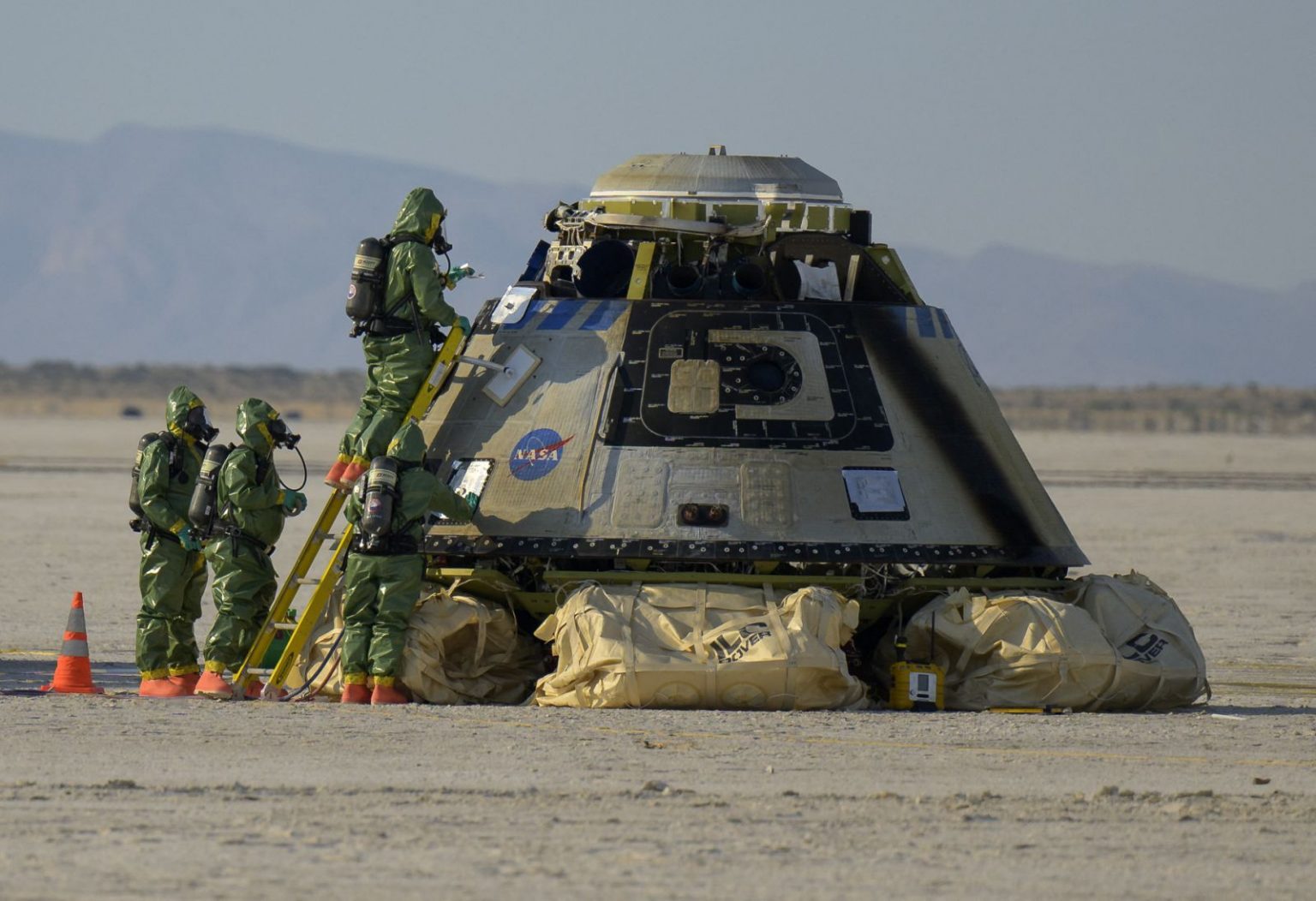WASHINGTON (AFP) —- Boeing’s Starliner capsule returned to Earth Wednesday in the final step of a key uncrewed test flight to prove itself worthy of providing rides for NASA astronauts to the International Space Station.
The gumdrop-shaped spaceship landed in a puff of sand at 4:49 p.m. local time in the New Mexico desert, wrapping up a six-day mission crucial to restoring Boeing’s reputation after past failures.
“Just a beautiful touchdown in White Sands this evening,” said an announcer on a NASA live feed, as ground control reacted with applause, and a recovery team raced to the landing site.
Orbital Flight Test-2 (OFT-2) was the last hurdle for Starliner to clear before it carries humans in another test flight due to take place by the end of this year. If that succeeds, the spaceship will begin regular service.
Addressing reporters at a post-touchdown briefing, NASA’s Steve Stich, who oversees the commercial crew program, summed up: “We have a few things to work on… but I don’t really see any showstoppers.”
“We really do have the crewed flight test next on our focus,” he added.
NASA is looking to certify Starliner as a second “taxi” service for its astronauts to the space station — a role that Elon Musk’s SpaceX has provided since succeeding in a test mission for its Dragon capsule in 2020.
Both companies were awarded fixed-price contracts — $4.2 billion to Boeing and $2.6 billion to SpaceX — in 2014, shortly after the end of the Space Shuttle program, during a time when the United States was left reliant on Russian Soyuz rockets for rides to the ISS.
<p style=”text-align: center;”><strong>Landing airbags</strong></p>
Starliner docked with the orbital outpost on Friday, a day after blasting off from the Kennedy Space Center in Florida.
Over the weekend, astronauts living aboard the station opened the hatch and “greeted” the capsule’s passengers: Rosie the Rocketeer, a mannequin equipped with sensors to see what astronauts would have experienced, and a plush toy named Jebediah Kerman, the ship’s zero-g indicator.
